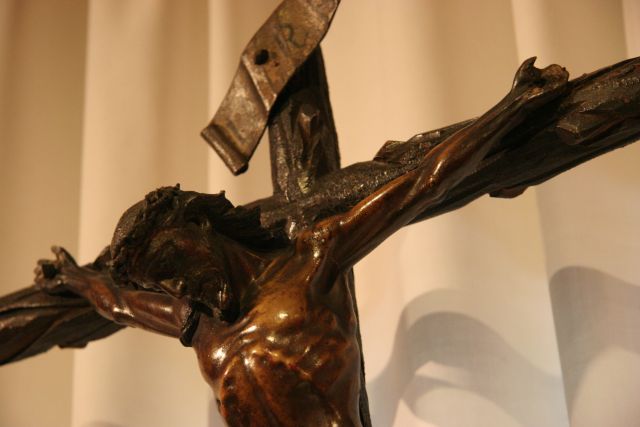Rev. Fr. Joseph Koterski, SJ
Reading the Letter to the Philippians
Part I

One of the distinctive traits of each letter by Saint Paul is his pattern of emphasizing some significant aspect of the mystery of Christ and showing the correlative trait that ought to be found in His followers. In the Letter to the Philippians his theme is Christ’s humility and our need to imitate His humility. The letter begins in prayer for the Christians at Philippi, a city of Thrace (north-eastern Greece) that Paul visited on his second missionary journey between 50 and 52 A.D. and then again duringthis trip journey between 53 and 58 A.D. After a greeting (1:1-2), Paul is effusive in his thanks for the way in which the Philippians have embraced the Gospel (1:3-5) and been generous in supporting him (4:14-18). Accordingly he prays that God, who began such good work among them, will bring it to completion in Christ (1:6) and supply their every need (4:19).

There is much that is quite personal in this letter. We read, for instance, of Paul’s Pharisee heritage (3:5), his yearning to visit the brethren at Philippi (1:8), and the success of his witness to Christ even among the praetorian guard during his imprisonment (1:12-14). We hear of his hope to send Timothy to them (2:19-24) and his plea that Eudoia and Synteche come to agreement with one another in the Lord (4:2).
The Christology found in this document (2: 5-11) is unique among the various approaches to the mystery of Christ that Paul displays in his letters. Often called a kenotic Christology (from the Greek word kenosis, “emptying”), the central idea here is that in the Incarnation the Eternal Word of God “emptied himself” by taking the form of a servant rather than clinging to the equality with God the Father that was his by right. This passage is in the form of a short hymn that Paul incorporates into his Letter as something from the liturgy of the Church in ancient Philippi.
Before we turn to Paul’s account of how Christians are to imitate Christ’s humility, there is much of theological significance that deserves careful comment. The scholarly terminology current nowadays would label the Christology operative here “a descending high Christology” because this Letter explicitly asserts that the one who takes on a human nature has equality with the Father (2:6) and that he descends to the level of human beings by taking our form and adopting the status of a servant (2:7). By contrast, scholars use the term “an ascending low Christology” to characterize those writings in which Jesus is taken to be given divine honors only after doing various deeds or in which the mystery of Christ’s being is only gradually disclosed to be divine. There is nothing of the sort here, for this Letter formally recognizes his equality with the Father from its start and praises the generosity that is shown by taking on a full human nature and not clinging to what he has by virtue of his divine nature.
In this divine self-sacrifice he shows his complete obedience to the will of the Father, even to the point of a painful bodily death by crucifixion. On account of this perfect humility, the Father has exalted his human name (“Jesus”) and joined to it the title of “Lord,” that is, Kyrios, the word that throughout the Greek version of the Old Testament translates the special Hebrew term Adonai that reverent Jews always substitute for the sacred and unpronounceable name of God (YHWH). The hymn thus closes by acclaiming Jesus Christ as Lord. We have in this text the source for our Christian liturgical practice of bowing at the name Jesus (2:10). It is one of the premier textual sources for the proclamation of the divinity of Jesus in all Christian creeds (2:11).